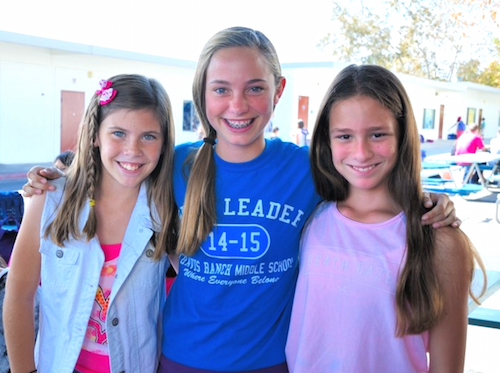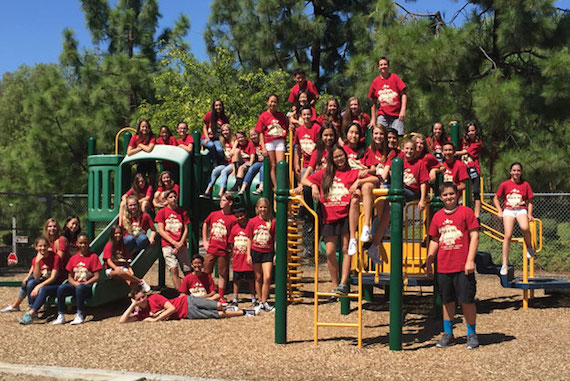Help New Students Feel Truly Welcome
How can we do more to help adolescents coming into a new school feel truly welcome?
I have worked in the public schools for 23 years. I began my career as a teacher but soon realized I cared most about students’ hearts. I have since worked as a school counselor for 17 years. After nearly a decade at the high school level, I moved to my current middle school where I’m now in my ninth year.
During my first few years in the middle, we simply enrolled new students, wrote a schedule for them, handed them a map, and told them to have a great day. Of course, we always made sure to remind them that if they needed anything to “please let me know.” That’s how it works in most middle and high schools, most of the time.
But as I came to know “middle schoolers” better, I realized that while this might be the dominant paradigm, it was not a paradigm that worked effectively for young adolescents.

Adolescence is an age of such uncertainty, the last thing a student this age needs is a day, week, or month of discomfort. So I made a few adjustments.
Welcome to Middle School!
The first thing we did was create a “Welcoming Committee” where current students greet the new kids, show them around, sit with them at break and lunch, and generally keep their eye on them for the next month or two.
While I would love to do this for every new student on the first day of school, the sheer numbers make it unmanageable. Also, every middle school student (however experienced) needs to focus on their own adjustment during the first days after school begins.
So our welcoming committee is something we do for all new students who enter any of our grades after the commencement of the new school year.
How Our Welcoming Program Works
I recruit volunteers who want to become part of a “welcoming committee.” I collect data about these volunteers (e.g., honors, non-honors, electives, sports, outside activities, etc.), and create a spreadsheet so I can swiftly and efficiently match up our volunteer committee members with our incoming students.
I select two same age/grade/sex peers. I also recruit two students from our WEB program (Where Everyone Belongs by the Boomerang Project ) who not only show our new student their classroom locations, the cafeteria, bathrooms, and locker room, and sit with them at break and lunch, but also monitor how they are adjusting to school and keep their eyes on the student for a long while.
Should our new student not be completely comfortable, making friends, and adjusting well, the WEB leaders report back to me so I can intervene and support our new student.
The same age/grade/sex peers and WEB leaders have different functions. The matched peers are social support. They are there as friends until our new student chooses otherwise. The WEB students are there to observe and make sure adequate adjustment is taking place. Different roles, different purposes, but they share the same goal: incoming student happiness.
My Other Strategy
In my guidance role, I also take the time to meet and talk with every new student. I also talk with parents and guardians.
During my conversations with new students, I explain signature school practices before they dive in, give them tips and tricks on how to be successful, and offer them a chance to ask any questions they may have.
All this requires a 30-minute meeting, and as you might guess, I meet with many students. We have a lot of families moving into our area specifically so their kids can attend our middle school. I believe the impact on student attitudes, behavior, and learning make the time investment worth every minute.
Since we’ve established these practices, our new students have found it much easier to blend into everyday school life. I regularly get calls about how happy both parents and students are. The initial anxiety that all students feel is significantly diminished because they have buddies and other classmates looking out for them.
Tips on Getting Started
If you’re interested in developing a similar program, here are some tips and lessons learned:
- Create an announcement recruiting volunteers to an information meeting, or announce it to students at lunch.
- Hold your meeting informing students about the program. Let them know they may/may not be actually utilized. Explain this has everything to do with the pairing process (common classes, grade level, sex/gender, interests, etc.). You can start doing this in the spring for the following fall.
- Develop your spreadsheet of volunteer committee members. (Note: Try to recruit as many volunteers as possible. The more variety, the easier it is to match newbies and volunteers.)
- When a new student arrives, set up a meeting for that afternoon. (You may want to grant permission for the registrar to do this on your calendar.) This immediate contact allows you time to connect with volunteers and WEB leaders before the next day.
The morning before the start date, create the schedule for the new student, notify teachers of the new student, and meet with the selected committee members and WEB students to arrange a meeting 30 minutes before school starts. (Ask the selected committee members to be at school 5 minutes before the new student.)
- Connect your new student with the selected volunteers/WEB student team and instruct the team to show the new student any important places on campus, including where to go for help if they need any.
- Ask the welcoming committee team to personally deliver the new student to their first period class, and as many subsequent classes as possible.
- Find the student at break and lunch to see that they are doing okay. Take the time to ask the student how everything is. Occasionally, they will have a question.
- Let the students take it from there. Follow up with the committee members and WEB leaders to make sure the new students are settling in.
Looking back at my process, you might find more success with this program if you mix the WEB leaders (ASB students, or other school leaders) in with your welcoming committee members from the beginning. The welcoming committee members are same age/grade/sex peers. The WEB leaders (ASB leaders, etc.) provide a different type of support by focusing on monitoring student adjustment.
Another consideration would be “who” and “how many” volunteers you recruit. You could be more active with recruitment and draw more students. Some students who prove to be very supportive and engaging in this kind of program may not always be the top academic students. I believe that all of us have students who would like to help other students, even in the most challenging environments.
Transition Programs Are So Important for Young Adolescents

Finally, I have found that all students gain from helping each other. As one former Welcoming Committee member insightfully said, “The benefits are for all people involved.”
I’m Ready to Help
I am very excited to share this idea with other counselors and teachers in the the hope that it can benefit all of our students. It really is not that much work but does require some finesse and careful planning.
If you have any questions, please don’t hesitate to contact me at dawatts@pylusd.org. Additionally, I would love to hear from you about what works for you and any ideas or suggestions you might have to share. Wishing you the very best on your new adventure!
Dana L. Watts is the Middle School Counselor at Travis Ranch School in the Placentia-Yorba Linda (CA) Unified School District, where she lives with her two children (17 & 20). She has also worked as a high school counselor and elementary school teacher and holds an MA and PPS in School Counseling. She enjoys coming up with new ways to help all students learn and grow in the best way they can.









































This is awesome! Great job!!
Dana, I’m interested in learning more about this program. Would you be willing to connect via telephone to share more details?
Absolutely! Please email me and we can discuss contact from there. My email is dworden@pylusd.org. I look forward to supporting you :)